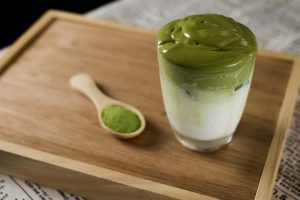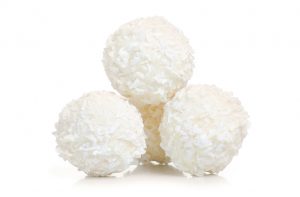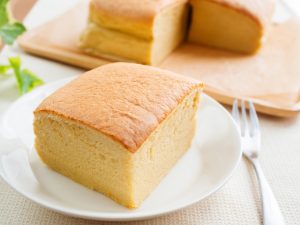Embark on a culinary journey with this classic Chicken Noodle Stir Fry recipe. Filled with an assortment of colorful vegetables and tender juicy chicken, this stir fry is a perfect blend of savory, sweet, and umami flavors. It's quick and easy, making it an ideal choice for weeknight dinners.
Some of the ingredients that you might not find in a typical pantry include hokkien noodles, sesame oil, oyster sauce, and baby corn spears. Hokkien noodles are a type of Chinese egg noodle often used in stir fry dishes. They can typically be found in the Asian section of most supermarkets. Sesame oil, oyster sauce, and baby corn spears can also be found in the same section. Make sure to source these items ahead of cooking.
Essential Ingredients for Chicken Noodle Stir Fry
Sesame oil: A rich, nutty oil that adds a distinct flavor to Asian dishes.
Chicken thighs: Preferred over breast meat for their juiciness and flavor.
Onion: Adds a sweet, caramelized flavor when stir fried.
Broccoli: Provides a crunchy texture and is a good source of vitamins.
Snow peas: Adds a sweet and slightly crunchy texture.
Green beans: Another source of crunch and freshness.
Red capsicum: Adds sweetness and vibrant color to the stir fry.
Baby corn spears: These add a unique, mild sweetness and soft crunch to the dish.
Garlic: A basic flavor enhancer in many dishes.
Oyster sauce: A thick, salty-sweet sauce made from oyster extract, giving the dish a deep umami flavor.
Soy sauce: Adds saltiness and a rich color to the dish.
Brown sugar: Balances the salty sauces with a touch of sweetness.
Hokkien noodles: Thick, soft noodles that soak up the flavors of the stir fry sauce beautifully.
One reader, Helli Swenson says:





This chicken noodle stir fry recipe is a game-changer! The flavors are incredible, and the dish is so easy to make. The combination of tender chicken and fresh, crunchy vegetables is simply delightful. It's become a family favorite in our house, and I can't recommend it enough!
Essential Techniques for Making Chicken Noodle Stir Fry
How to stir-fry chicken: Involves cooking the chicken in small batches until golden and cooked through, ensuring it is not overcrowded in the pan to allow for even cooking.
How to stir-fry vegetables: Involves cooking the vegetables until they are still crunchy on the outside but beginning to soften on the inside, ensuring they retain their vibrant colors and flavors.
How to simmer noodles: Involves adding the pre-washed and prepared noodles to the stir-fry and simmering them, stirring occasionally for 2 to 3 minutes, until they have softened and cooked through.
How To Make Chicken Noodle Stir Fry
Simple yet elegant and tasty, this chicken noodle stir fry is soaked in a beautiful rich fragrant sauce for a filling and satisfying dinner meal.
Serves:
Ingredients
- 1tbspsesame oilor peanut oil
- 8chicken thighsboneless and skinless
- 1onionsliced
- 1broccoliquartered
- 1cupfresh snow peaswashed and string removed
- ½cupgreen beanswashed
- 1red capsicumor bell pepper, de-seeded and diced
- 12baby corn spearsfresh or canned
- 2tspgarlicminced
- 3tbspoyster sauce
- 2tbspsoy sauce
- 1tbspbrown sugar
- 15ozHokkien Noodlesprepared to package instructions prior to cooking
Instructions
-
Heat a large frying pan or wok over medium-high heat. Add oil and when hot, fry the chicken in small batches until golden and cooked through.
-
When all the chicken is cooked, add the broccoli, snow peas, green beans, red capsicum/bell peppers, and corn spears. Stir fry vegetables until still crunchy on the outside but beginning to soften on the inside.
-
Add garlic, sauces, and sugar then mix to combine.
-
Add the pre-washed and prepared noodles, and simmer stirring occasionally for 2 to 3 minutes, or until the vegetables have turned bright in color and the noodles have softened and cooked through.
Nutrition
- Calories: 994.82kcal
- Fat: 49.56g
- Saturated Fat: 13.11g
- Trans Fat: 0.27g
- Monounsaturated Fat: 19.97g
- Polyunsaturated Fat: 11.32g
- Carbohydrates: 79.92g
- Fiber: 8.34g
- Sugar: 13.14g
- Protein: 58.81g
- Cholesterol: 311.72mg
- Sodium: 789.62mg
- Calcium: 113.79mg
- Potassium: 1310.76mg
- Iron: 6.75mg
- Vitamin A: 160.12µg
- Vitamin C: 76.24mg
Crucial Technique Tip for Perfecting This Stir Fry
When stir frying, it's important to keep the ingredients moving constantly. This ensures even cooking and prevents any one ingredient from burning or sticking to the pan. Also, adding the ingredients in stages, starting with the ones that take the longest to cook, will ensure that everything is done at the same time. In this chicken noodle stir fry recipe, the chicken is cooked first, followed by the vegetables, and finally the noodles. This order allows each component to be perfectly cooked. Remember, the goal of a good stir fry is to have a variety of textures in one dish, from the tender chicken to the crisp vegetables and soft noodles.
Time-Saving Tips for Making This Recipe
Prep ahead: Chop and marinate the chicken and vegetables the night before to save time on the day of cooking.
One-pot wonder: Use a large skillet or wok to cook everything in one pan, reducing the number of dishes to clean up.
Quick-cooking noodles: Opt for quick-cooking noodles such as hokkien noodles to cut down on the overall cooking time.
Multi-task: While the chicken is cooking, prep the vegetables to maximize efficiency in the kitchen.
Organized workspace: Ensure all ingredients and utensils are organized and within reach before starting to cook for a smoother process.
Substitute Ingredients For Chicken Noodle Stir Fry Recipe
sesame oil - Substitute with peanut oil: Peanut oil has a similar nutty flavor and high smoke point, making it a suitable substitute for sesame oil in stir-fry recipes.
chicken thighs - Substitute with tofu or tempeh: Tofu or tempeh can provide a similar texture and absorb the flavors of the stir-fry sauce, making them great vegetarian alternatives to chicken.
snow peas - Substitute with sugar snap peas: Sugar snap peas have a similar crunch and sweetness, making them a suitable replacement for snow peas in the stir-fry.
hokkien noodles - Substitute with rice noodles: Rice noodles can be used as a gluten-free alternative to hokkien noodles, and they absorb flavors well in stir-fry dishes.
Best Way to Present Chicken Noodle Stir Fry
Elevate the plating: As a chef, presentation is key. Arrange the stir-fry on the plate with precision and attention to detail. Use edible flowers or microgreens to add a pop of color and freshness to the dish.
Incorporate texture: Create contrast in the dish by adding a crunchy element such as toasted sesame seeds or crushed peanuts on top of the stir-fry. This will add depth and complexity to each bite.
Utilize negative space: Embrace the concept of minimalism by allowing some of the plate to remain empty. This will draw attention to the vibrant colors and textures of the stir-fry, creating a visually appealing presentation.
Balance the elements: Pay attention to the balance of colors and ingredients on the plate. Ensure that each component of the stir-fry is showcased effectively, creating a visually stunning and harmonious presentation.
Garnish with finesse: Add a final touch to the dish by garnishing with a drizzle of chili oil or a sprinkle of finely chopped chives. This will not only enhance the flavors but also elevate the overall presentation.
Essential Tools for Making Stir Fry
- Frying pan or wok: A wide, flat-bottomed pan with sloping sides, perfect for stir-frying ingredients over high heat.
- Spatula: A versatile tool for flipping, stirring, and serving the ingredients in the stir-fry.
- Chopping board: A sturdy surface for safely chopping and preparing the vegetables and chicken.
- Knife: Essential for slicing and dicing the chicken, onion, and other vegetables.
- Measuring spoons: For accurately measuring and adding the oyster sauce, soy sauce, and brown sugar.
- Tongs: Useful for turning and tossing the ingredients in the stir-fry.
- Cooking oil: Used for frying the chicken and vegetables.
- Large mixing spoon: For stirring and combining the ingredients in the stir-fry.
- Large plate or bowl: To hold the cooked chicken and vegetables while stir-frying in batches.
- Strainer or colander: For rinsing and draining the hokkien noodles before adding them to the stir-fry.
Storing and Freezing Leftover Chicken Noodle Stir Fry
Allow the chicken noodle stir fry to cool completely before storing or freezing. This will prevent the noodles from becoming soggy and the vegetables from losing their crunch.
To store in the refrigerator, transfer the cooled stir fry to an airtight container. It will keep well for up to 3-4 days.
For longer storage, you can freeze the stir fry:
- Divide the cooled stir fry into individual portions and place them in freezer-safe containers or resealable bags.
- Squeeze out as much air as possible from the bags to prevent freezer burn.
- Label the containers or bags with the date and contents for easy identification.
- Freeze for up to 2-3 months for best quality.
To reheat the frozen stir fry:
- Thaw the desired portion in the refrigerator overnight.
- Heat a small amount of oil in a pan or wok over medium-high heat.
- Add the thawed stir fry to the pan and stir-fry until heated through and the vegetables are crisp-tender, about 5-7 minutes.
- Alternatively, you can reheat the stir fry in the microwave, stirring occasionally, until heated through.
Note that the texture of the noodles and vegetables may slightly change after freezing and reheating, but the flavor will still be delicious.
How To Reheat Leftover Stir Fry
To reheat leftover chicken noodle stir fry, start by placing the desired portion in a microwave-safe dish. Cover the dish with a damp paper towel to prevent the noodles from drying out during the reheating process. Microwave on high for 1-2 minutes, stirring halfway through, until the stir fry is heated through and steaming.
For a crispier texture, you can reheat the chicken noodle stir fry in a skillet or wok over medium-high heat. Add a small amount of sesame oil or water to the pan to prevent sticking and to help revive the flavors. Stir the leftovers frequently until they are heated through and the vegetables have regained their vibrant colors, about 3-5 minutes.
If you have a bit more time, you can reheat the chicken noodle stir fry in the oven. Preheat the oven to 350°F (175°C). Transfer the leftovers to an oven-safe dish, cover with foil, and bake for 10-15 minutes, or until the stir fry is heated through. Remove the foil for the last 2-3 minutes of reheating to allow any excess moisture to evaporate and to help crisp up the noodles slightly.
Regardless of the reheating method you choose, be sure to add a splash of soy sauce or oyster sauce to help revive the flavors and combat any dryness that may have occurred during storage. You can also garnish the reheated chicken noodle stir fry with fresh herbs like cilantro or green onions to add a pop of freshness and brightness to the dish.
Interesting Fact About Chicken Noodle Stir Fry
Hokkien noodles are a type of Chinese noodle made from wheat flour and egg. They are often stir-fried and are a popular ingredient in many Asian dishes.
Is Making Stir Fry at Home Cost-Effective?
This chicken noodle stir fry recipe is quite cost-effective for a household. The combination of chicken thighs, vegetables, and noodles makes it a budget-friendly meal. The use of affordable ingredients like onion, broccoli, and green beans keeps the cost down. The recipe's versatility allows for easy substitution of ingredients based on availability and budget. The approximate cost for a household of 4 people is around $20, making it an economical choice. Overall, I would rate this recipe an 8 for its affordability and delicious outcome.
Is This Stir Fry Healthy or Unhealthy?
This chicken noodle stir fry recipe has both healthy and unhealthy aspects. On the positive side, it includes a variety of vegetables such as broccoli, snow peas, green beans, red capsicum, and baby corn, which provide essential vitamins, minerals, and fiber. Chicken thighs are a good source of protein, although they are higher in fat compared to chicken breast. The use of sesame oil adds healthy fats to the dish.
However, the recipe also contains some less healthy ingredients. Oyster sauce and soy sauce are high in sodium, which can contribute to high blood pressure and other health issues if consumed in excess. Brown sugar adds extra calories and carbohydrates to the dish. Hokkien noodles, being a refined carbohydrate, may cause a rapid spike in blood sugar levels.
To make this recipe healthier, consider the following suggestions:
- Use chicken breast instead of thighs to reduce the fat content
- Reduce the amount of oyster sauce and soy sauce, or opt for low-sodium versions
- Replace brown sugar with a natural sweetener like honey or maple syrup, or omit it altogether
- Swap hokkien noodles with whole grain noodles or zucchini noodles for added fiber and nutrients
- Increase the proportion of vegetables to noodles and chicken for a more balanced meal
- Add some crushed nuts or seeds for extra protein, healthy fats, and crunch
By making these adjustments, you can transform this dish into a more nutritious and well-rounded meal that still retains its delicious flavors. Remember, moderation is key, and enjoying a variety of foods as part of a balanced diet is the best approach to overall health and wellbeing.
Editor's Opinion on This Stir Fry Recipe
This chicken noodle stir fry recipe is a delightful combination of tender chicken, vibrant vegetables, and flavorful sauces. The use of sesame oil adds a rich nuttiness, while the combination of oyster sauce, soy sauce, and brown sugar creates a perfect balance of savory and sweet. The addition of hokkien noodles provides a satisfying base for the dish. The cooking method ensures that the vegetables retain their crunch and vibrant color, adding a delightful texture to the stir fry. Overall, this recipe promises a delicious and satisfying meal that is sure to impress.
Enhance Your Chicken Noodle Stir Fry Recipe with These Unique Side Dishes:
Similar Recipes to Try If You Love This Stir Fry
Perfect Appetizers and Desserts for a Stir Fry Meal
Why trust this Chicken Noodle Stir Fry Recipe:
This recipe offers a delightful combination of sesame oil and tender chicken thighs, creating a flavorful base for the dish. The addition of fresh vegetables such as broccoli, snow peas, and red capsicum ensures a vibrant and nutritious meal. The use of oyster sauce and soy sauce adds depth and complexity to the flavors, while the inclusion of hokkien noodles provides a satisfying and hearty element. With a harmonious blend of ingredients and a straightforward cooking method, this chicken noodle stir fry recipe promises a delightful dining experience.
Was this page helpful?
Have your own special recipe to share? Submit Your Recipe Today!




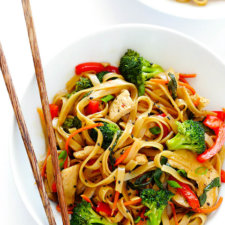
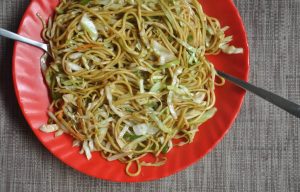
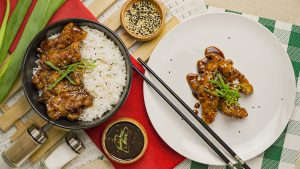
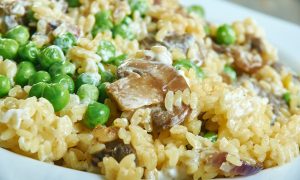



-recipe-300x200.jpg)

